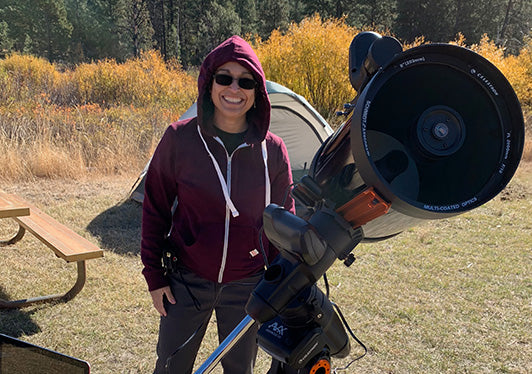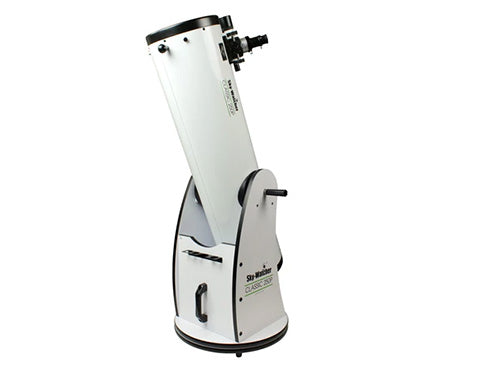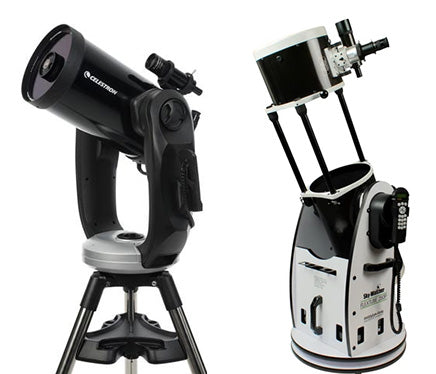Deep-Sky Viewing
When it comes to deep-sky observation telescopes, aperture definitely wins. The more aperture you have, the more light you can collect. The more light you collect, the fainter an object you can see. So, you might ask, why not just buy the biggest telescope I can afford? The answer might surprise you. There are several other important aspects that play into what type of telescope you might want for catching those faint fuzzies.

Portability
Perhaps one of the biggest “side effects” of Aperture Fever is the issue of portability. The only thing worse than a telescope that is too small is one that is too big. All too often, a person buys a telescope that is too large for them to transport or set up, uses it once or twice, and then the only darkness it sees is the inside of a closet. Large telescopes require large vehicles for transport and large pieces of glass are heavy. You want to make sure you are willing and able to move around a couple hundred pounds if you go for the big 20-inch+ telescopes! Be sure you are comfortable moving, assembling, and disassembling whatever telescope you decide to buy.
The best telescope is not automatically the largest; the best telescope is the one you use the most.

Mount Design
This is typically a personal preference issue. Most often, observers choosing large aperture Newtonians prefer the Dobsonian design. The Dobsonian gives you the ability to get the most aperture for your money. Traditionally, these mounts do not track the sky, requiring the user to nudge the telescope to follow the object of interest. This is changing however. Newer technologies are now allowing for Dobs to not only track the sky, but to perform GOTO functions as well! Additional options include traditional Altitude-Azimuth mounts on tripods, along with German Equatorial mounts. As always, you want to make sure your mount is sturdy enough to hold your telescope. Always err on the side of overmounting. The staff at Cloud Break Optics can help you with any mount questions you may have.

Optical Design
If deep-sky astronomy is your main passion, you’ll probably want to consider a Newtonian Reflector. Typically, you’ll get the most bang for your buck in terms of dollar per inch of aperture. If you do choose a Newtonian focal length will be something you want to consider. Big aperture, long focal length Newtonians can be unwieldy or require large ladders to reach the eyepiece. Fast versions of these scopes, however, will most definitely require additional accessories (which require additional cost) to remove coma. Another popular design is the Schmidt Cassegrain telescope. Again, these types of telescopes tend to be affordable in large sizes (though, less so than a Newtonian). Typically, however, they have long focal lengths, and a reducer/corrector might be desirable to achieve a wider field of view. We can help you choose the design that works best with your observing style.

Our Equipment Recommendations for DeepSky Observing:
Sky-Watcher Dobsonians (beginner through advanced)
Astrosystems Custom Dobsonians (Advanced - email for quote)
Celestron CPC 9.25” SCT (intermediate/advanced
Celestron CPC 11" SCT (advanced)
In Conclusion
In our experience, a large Dobsonian telescope under a dark sky puts us in our happy zone.
We say measure your car and your storage space and get the biggest scope you can! Take advantage of the cool collapsible designs to maximize the portability. But don’t forget: A scope that is TOO large will not get used very often, and that would be very sad indeed.
There is nothing more satisfying than a night under dark skies with a big aperture telescope.
The night sky has so many deep-sky gems to offer. Let us help you find the best telescope for deep-sky viewing that will help you see all these faint fuzzies, as well as suit your lifestyle.
OUR RECOMMENDATIONS FOR Deep-Sky Viewing
Sorry, there are no products in this collection

